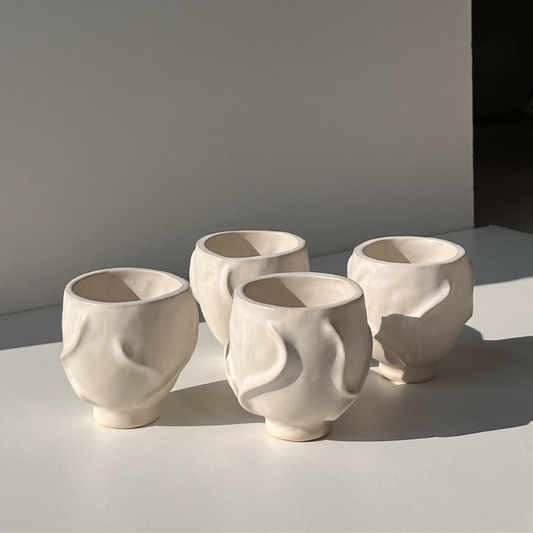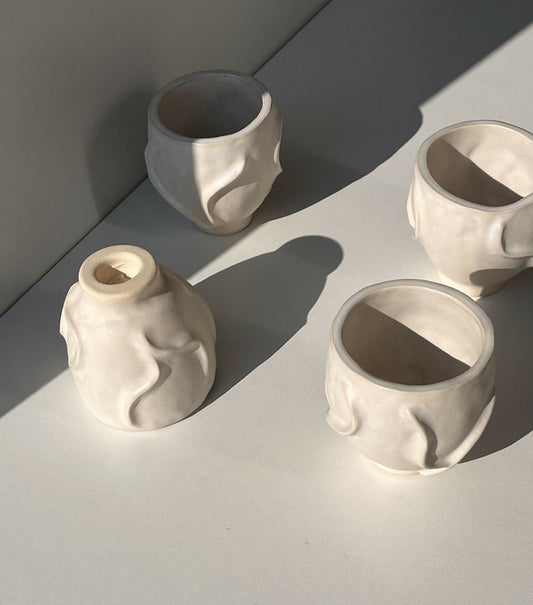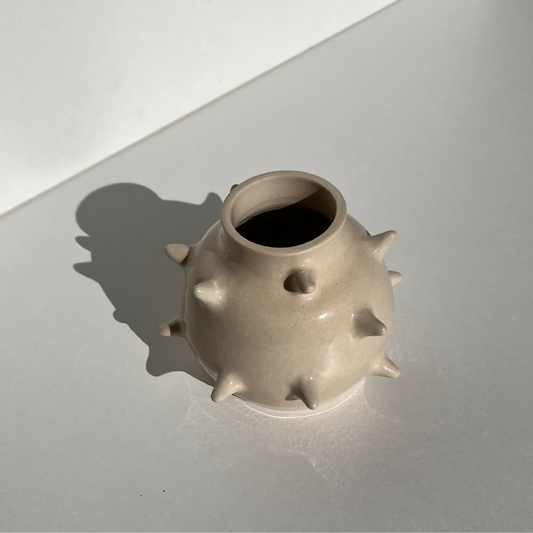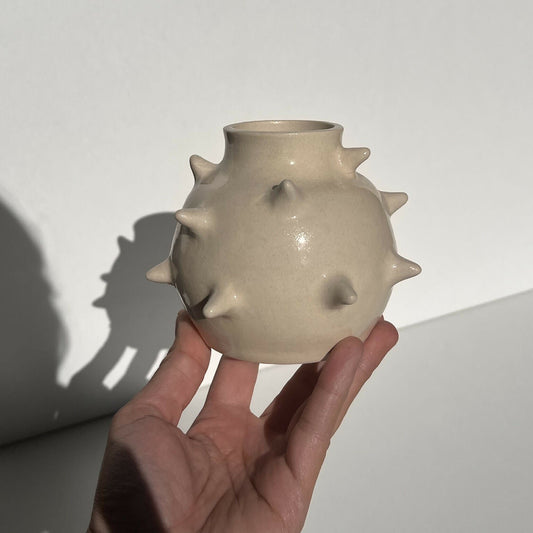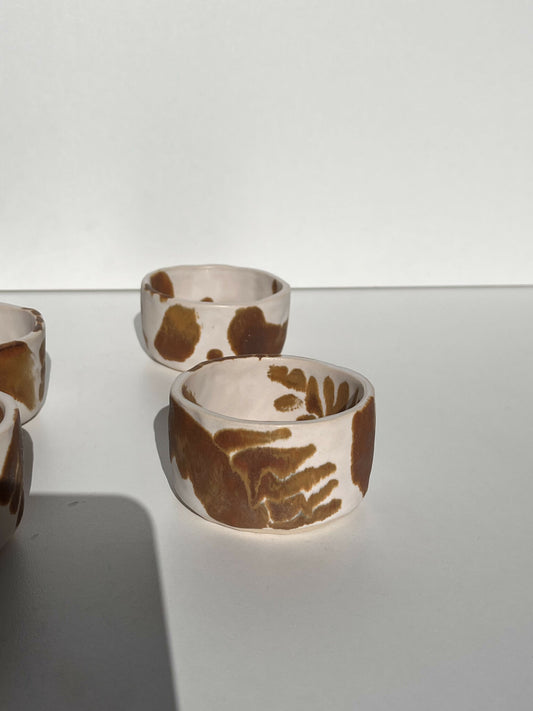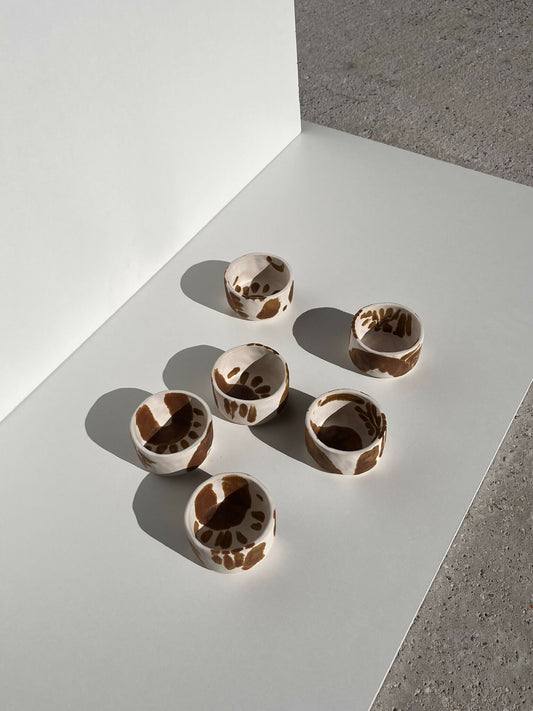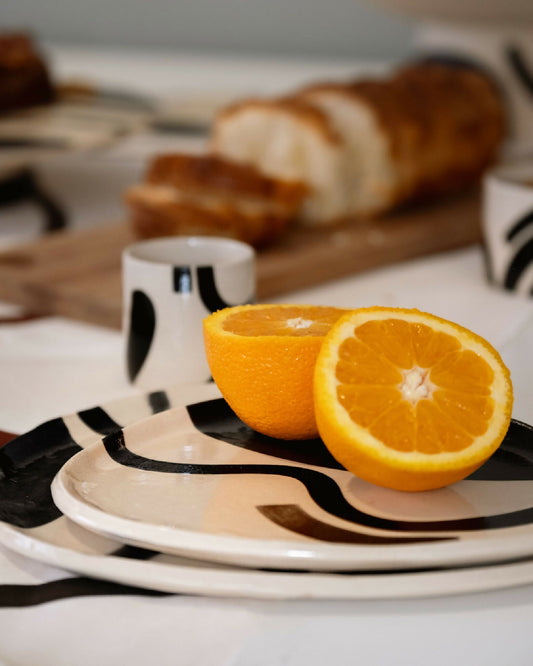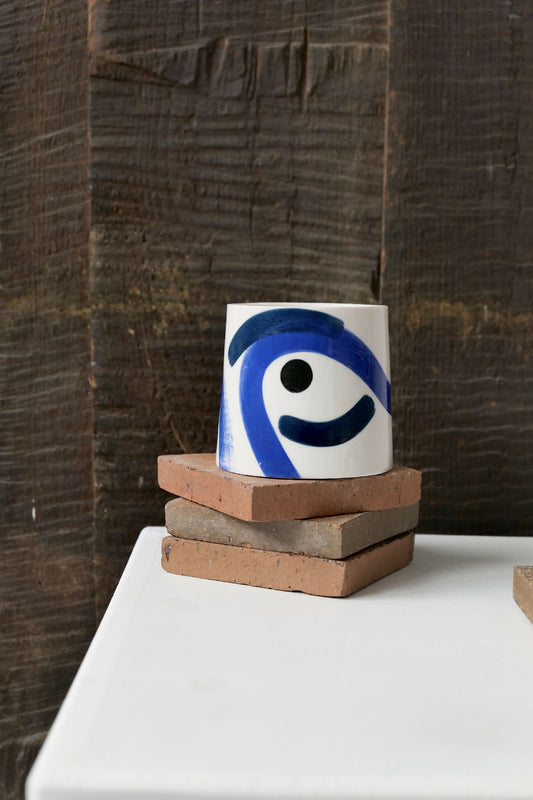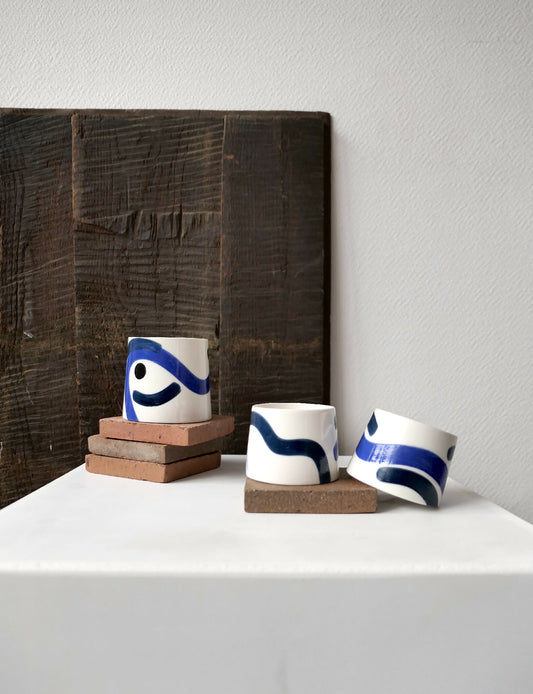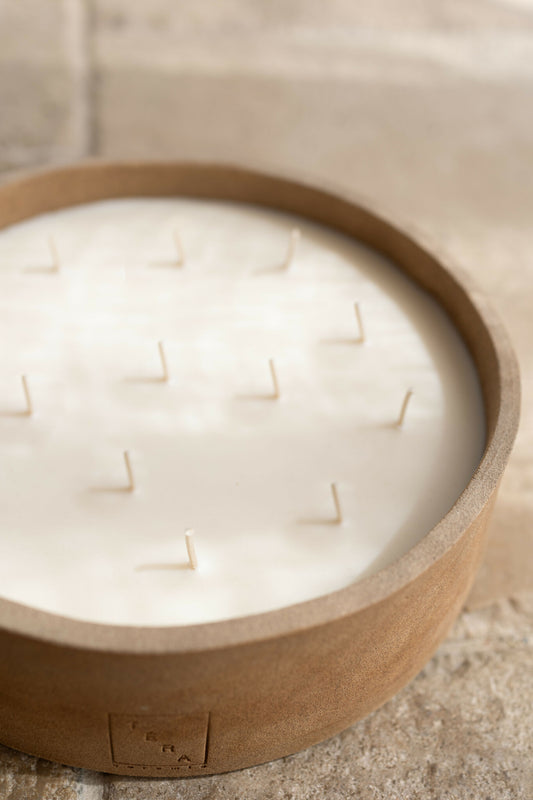Much more than a simple molded and hardened clay, ceramic is the combination of Art, Science and History shaped together to give life to objects that are both utilitarian and aesthetic.
Literal Definition of Ceramics
The term ceramic has its roots in the Greek word “keramos” meaning clay. This term designates a family of solid materials made from non-metallic inorganic raw materials.
This ancestral art dating back millennia is intimately linked to the history of humanity, having served both utilitarian and artistic purposes forever.
The basics
Ceramics are typically produced by firing clay at high temperatures in a kiln, a process that transforms the malleable raw material into a hard, durable finished product.
The firing temperature, which can vary between six hundred degrees Celsius and more than one thousand six hundred degrees Celsius depending on the type of ceramic, greatly influences the physical properties of the finished object, such as its porosity, its mechanical resistance and its aesthetic appearance. .
Porcelain, stoneware, earthenware... What are the differences?
It is important to understand that all these terms belong to the same family, ceramics. Ceramic is actually a generic term that groups together four main types:
-
Terracotta is a clay-based ceramic, fired at low temperature. It is used for the manufacture of pottery, bricks and tiles, flower pots, etc.
- Earthenware is a clay-based ceramic, made waterproof by an enamel. It is used for the manufacture of tableware (cups, plates, etc.), tiles and decoration.
- Porcelain is a fine, translucent ceramic made from kaolin. It is used for the manufacture of tableware, fine porcelain and decoration.
- Sandstone is a clay-based ceramic, fired at high temperature, vitrified surface. It is used for the manufacture of tiles, tableware, vases and decoration.
Terracotta
Terracotta is probably the oldest and most primary form of ceramic. Sometimes called Terra cotta, terracotta refers to the raw material, the earth to which a form has been given, whether utilitarian or decorative.
It must be cooked at a temperature above 600 degrees Celsius, generally between 600 and 900 degrees.
Rich in iron oxide, red earth is the most common soil covering our planet, making it more accessible to ceramists. This explains in particular why the use of red earth is the most widespread, even if there are white, black or gray earths. Flower pots, tiles and bricks are often made from this humble, yet sturdy material.
The terracottas are raw, and never covered with enamel. However, they can be decorated, painted or waxed.
The disadvantage that terracotta can present is that firing at relatively low temperatures leaves it porous. A terracotta container can therefore contain a liquid, but will absorb part of it and end up oozing onto the surface.
Earthenware
Earthenware is an evolution of terracotta. It is in fact terracotta to which a layer of enamel is added, making it waterproof.
Enamel is a thin layer of glass applied to the surface of terracotta pieces.
The principle of earthenware is double firing at around 900 degrees. The first cooking simply allows you to go from the state of raw earth to the state of cooked earth. At this point, the piece is called the "degourdi", or the "biscuit". A second firing transforms the biscuit into earthenware.
Even if the surface of the earthenware is waterproofed by the enamel, note that all uncovered surfaces remain porous. The cooking temperature of the earthenware is not sufficient to remove the intrinsic porosity of the earth.
Earthenware reached its peak during the Renaissance in Italy and France, particularly in Delft, whose blue and white pieces became iconic.
# Majolica
Majolica is a form of earthenware originating in Spain, which developed widely in Italy during the 15th century. It is notable for its tin-rich colored glazes that achieve vibrant colors and intricate designs. The designs are often inspired by the Renaissance and are applied freehand or by stencil.
Sandstone
Just like earthenware, stoneware is a clay that requires two firings: a first firing to be "biscuited" then a second after having been covered with enamel.
The difference between earthenware and stoneware lies in the firing temperature. If the first reaches 900 degrees just like earthenware, the temperature of the second firing once the enamel is applied, on the other hand, exceeds 1200 degrees. Note that the higher the cooking temperature, the darker the stoneware will be.
The molecules then melt and fill the pores of the earth. This is the beginning of a process of vitrification of the earth.
While terracotta and earthenware are called "open earth", stoneware is called "closed earth". Unlike the other two, it is no longer porous. Sandstone is therefore denser and stronger.
Stoneware is often used to make tableware, tiles and other objects that must withstand frequent use.
Porcelain
Fired at the same temperatures as stoneware, porcelain is also a “closed earth”, non-porous.
However, unlike stoneware and earthenware which are composed of a mixture of clay and oxides, porcelain is made of a single type of clay: Kaolin most often.
The purity and fineness of the particles of this earth give it the particularity of absorbing water and drying quickly. However, this makes it complex to work with, notably causing cracks when drying. To remedy this, craftsmen frequently add mineral or organic elements (felspar, silica, cellulose, etc.).
Just like stoneware, porcelain is fired twice, with a second firing at 1200 degrees, giving it its transparent appearance.
# Limoges Porcelain
Specific to the Limoges region in France, this porcelain is renowned for its exceptional quality. It follows very strict manufacturing criteria and benefits from a protected geographical indication. Its immaculate whiteness and delicacy make Limoges porcelain a collectible and luxury item.


